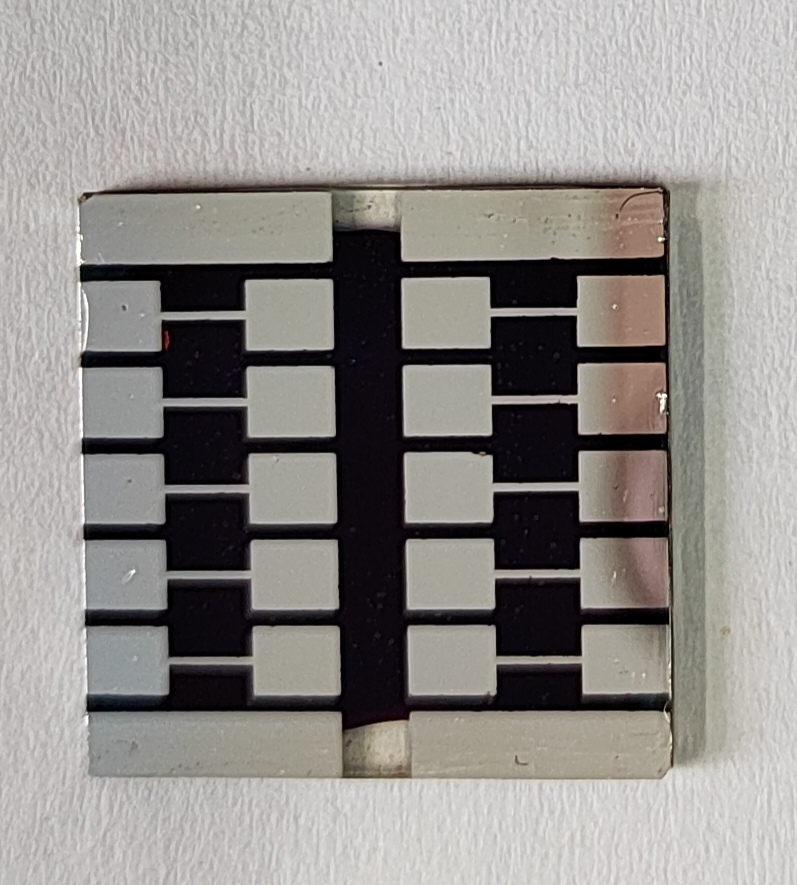Researchers in China claim to have fabricated an inverted perovskite solar cell with remarkable charge transport. They reportedly suppressed carrier recombination at the interface between the perovskite and the charge transport layer, as well as defect-assisted recombination originating from the perovskite layer.
The cell has a p-i-n structure, which means the perovskite cell material is deposited onto the hole transport layer, and then coated with the electron transport layer, unlike with conventional n-i-p device architecture. Inverted perovskite solar cells typically show strong stability, but lag behind conventional devices in terms of conversion efficiency and cell performance.
“For the first time, we used a molecule known as daminozide (DA) as interlayer and additive, to modify the perovskite buried interface energetics, and passivate defects at the such buried interface as well as in the perovskite bulk,” researcher Qinye Bao told pv magazine.
They built the cell with an indium tin oxide (ITO) substrate, a hole transport layer (HTL) made of poly-triarylamine (PTAA) and doped with the p-type dopant F4TCNQ and DA itself, a methylammonium lead iodide (MAPbI3) perovskite layer, a DA interlayer, an electron acceptor made of phenyl-C61-butyric acid methyl ester (PCBM), a phenyl-C61-butyric acid methyl ester (PCBM) layer, and a silver (Ag) metal contact.
“The dependences of the device power conversion efficiency on the DA interlayer thickness and the DA concentration are carefully evaluated, and the resulting optimal thickness and concentration are 4 nm and 0.05 wt.%, respectively,” the researchers explained.
The device has a power conversion efficiency of 22.15%, an open-circuit voltage of 1.131 V, a short-circuit current of 23.36 mA cm−2, and a fill factor of 83.92%. For comparison, a reference device without the DA interlayer achieved an efficiency rating of 19.04%, an open-circuit voltage of 1.074 V, a short-circuit current of 22.33 mA cm−2, and a fill factor of 83.16%.
Popular content
“These are the highest efficiency and the highest fill factor for polycrystalline MAPbI 3-based p-i-n perovskite solar cells reported to date,” the scientists said.
They found that an unencapsulated device was able to maintain more than 90% of its initial efficiency after 1,400 hours of storage in ambient conditions, while the control device quickly loses approximately 80% of its initial value after only 700 hours of storage.
They reported their results in “Synchronous Modulation of Defects and Buried Interfaces for Highly Efficient Inverted Perovskite Solar Cells,” which was recently published in Advanced Energy Materials.
“This work highlights the importance of synchronous management of defects and buried interfaces, and thus provides a promising potential for further improving the efficiency and stability of planar perovskite solar cells,” they concluded.
This content is protected by copyright and may not be reused. If you want to cooperate with us and would like to reuse some of our content, please contact: editors@pv-magazine.com.



8 comments
By submitting this form you agree to pv magazine using your data for the purposes of publishing your comment.
Your personal data will only be disclosed or otherwise transmitted to third parties for the purposes of spam filtering or if this is necessary for technical maintenance of the website. Any other transfer to third parties will not take place unless this is justified on the basis of applicable data protection regulations or if pv magazine is legally obliged to do so.
You may revoke this consent at any time with effect for the future, in which case your personal data will be deleted immediately. Otherwise, your data will be deleted if pv magazine has processed your request or the purpose of data storage is fulfilled.
Further information on data privacy can be found in our Data Protection Policy.